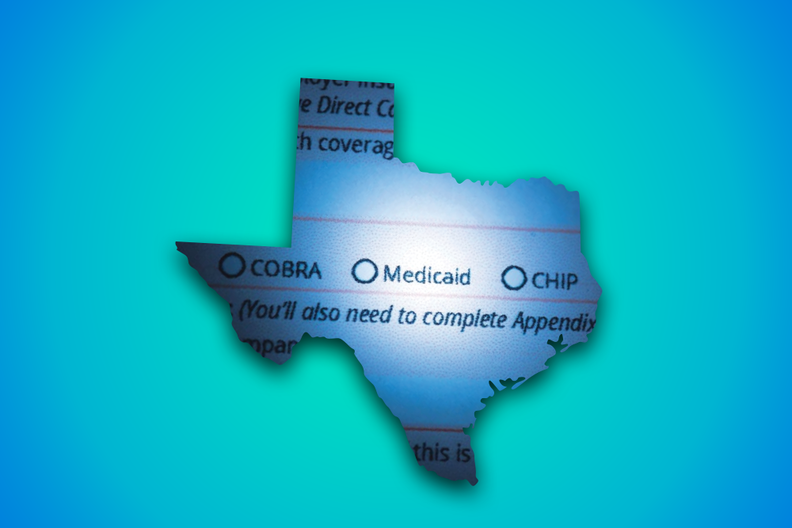Nearly half (47%) of the 79 million people who get their health insurance through Medicaid are children. To ensure continuity of coverage for children, Congress took action to protect children’s access to health insurance by requiring states to provide a full year of continuous coverage in Medicaid to children beginning in 2024. But will children’s coverage be spared as Congress contemplates policy changes that would require states to conduct more frequent Medicaid eligibility redeterminations to help achieve at least $880 billion in cuts to health spending? If not, we have reason to be concerned; consider what happened when Texas implemented monthly income checks on families whose children were covered by Medicaid.
Going back to 2009, all but two states – Texas and Georgia – had adopted 12-month renewal periods for children in Medicaid. At the time, although Texas kids in CHIP were protected by 12-month continuous eligibility, lower-income kids in Medicaid received two 6-month periods of continuous eligibility. That meant families had to renew their children’s eligibility twice a year. But things got worse in 2014 when the Texas Health and Human Services Commission (HHSC), without legislative direction, eliminated the second 6-month continuous eligibility period in Medicaid and introduced a new system of periodic income checks.
In months 5, 6, 7, and 8 of a children’s annual renewal period, before sending the renewal packet in month 10, Texas checked income from state quarterly wage data, the Social Security Administration, the Office of Child Support Enforcement, and a private data vendor, Equifax, to identify changes in family income. If any of the data sources reflected income above the Medicaid threshold, the family was sent a letter, providing only 10 days from the date the system generates the letter for families to respond and prove eligibility.
On average, over 6,000 households were contacted each month and, of those, 70% of children lost coverage. The majority, over 4,000 children, were disenrolled for procedural reasons each month, which means the state needed additional information to determine if the individual remains eligible.
There are a variety of reasons why people lose coverage without being determined ineligible. Sometimes the mail doesn’t reach them, or the renewal notice is confusing. If people are not able to get answers through to the call center, they may run out of time before the state processes the disenrollment. It’s also common for states to lose paperwork after it has been submitted, particularly when eligibility workers are overloaded. Some people enrolled in Medicaid, like gig workers or cash employees, may also have difficulty providing paper documentation.
But back to Texas. Over half the children who were disenrolled re-enrolled within 12 months suggesting that they were inappropriately disenrolled for paperwork or administrative reasons. Once disenrolled, families had to wait in line to get their kids re-enrolled given Texas’ dismal record of timely processing of new applications and heavy reliance on paper documentation. As of November 2024, more than one-third of Texas Medicaid applications (36%) took more than 45 days (the national standard) to process applications – compared to the national average of only 6%.
It’s ironic that Texas used income data from trusted data sources for periodic income checks but does not leverage those data to increase the share of automated renewals. When the COVID-related Medicaid continuous enrollment was lifted in early 2023, states were pressed to improve the share of renewals conducted on an automated basis using data available to the state. Afterall, ex parte renewals are efficient, accurate, and cost-effective; and they reduce churn, a long-standing problem in Medicaid. At the start of the unwinding of continuous enrollment in spring 2023, as it was called, fewer than 5% of Texas renewals were processed on an automated or ex parte basis using data available to the state. By November 2024, Texas had barely moved the needle, increasing the ex parte monthly rate to just 13% compared to the national median of 56%. This is one of the reasons that Texas has the highest child uninsured rates.
During the unwinding of continuous enrollment in 2023 and 2024, nearly 70% of individuals losing coverage were disenrolled for procedural reasons. Louisiana’s recent experience in conducting quarterly income checks for adults reinforces the fact that red tape and administrative hurdles fuel churn. Failure to respond to the request for information was the single largest reason for closures in Louisiana in each of the wage checks conducted to date, comprising about two-thirds of closures in three wage check cycles in 2024.
It’s well documented that frequent eligibility checks increase the administrative burden on eligibility workers and create gaps in coverage for low-income families and vulnerable groups. But the Texas experience illustrates how states can use data to suppress enrollment just as easily as they can use data to affirm eligibility. And that’s exactly what more frequent eligibility checks will do.
Rather than creating more administrative work for states, federal policy should focus on strategies that are cost-effective and promote coverage of eligible individuals, like setting minimum standards for automated or ex parte renewals. Doing so could save millions of dollars. For example, during the unwinding, the US Digital Services worked with 10 states to maximize their use of electronic data to auto-renew people’s coverage, saving over two million hours in worker processing time. Translated to dollars, these improvements saved over $96 million dollars based on a CMS estimate of $48.10 hourly cost for an eligibility worker to follow-up and process documentation. (Now, that’s what I call smart government efficiency producing real savings.)
And yet, this Congress is contemplating policy changes that would turn back the hands of time and force states to implement outdated procedures that will be administratively costly. More importantly, these changes will increase the uninsurance rate by causing children, families, seniors, and disabled individuals who have no other access to affordable health care to lose their Medicaid coverage.


